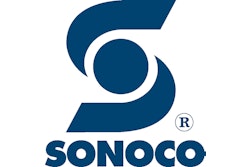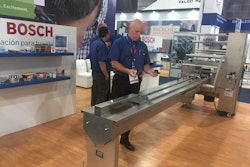
Dr. Louise Wicker, director of the School of Nutrition and Food Sciences, Louisiana State University AgCenter, is confident that shelf-stable meals, side dishes, and snacks can be part of a healthy diet for many consumers. A vegetarian of 20 years who prefers home cooking, she realizes that most shoppers don’t have the time or inclination to cook, so they want convenient, wholesome alternatives.
“As a food scientist and educator, my job is to help interested consumers learn about nutrition, portion size, and how foods can and should enhance someone’s life,” she says. “We know that taste, price, healthfulness, and convenience, in that order, are the reasons that foods are chosen. However, when shopping, we all see ideas that communicate ‘fresh,’ ‘natural,’ ‘healthy,’ and ‘tasteful.’ These and other suggestions that resonate with consumers may contribute little to a wholesome diet that fits the lifestyles of many consumers. And if we consider how supermarkets continue to drive shoppers to the periphery, away from center aisles, it is no wonder that many consumers may not be attracted to the idea of eating shelf-stable foods.”
Overseeing a nationally ranked program at LSU, Dr. Wicker’s interest in shelf-stable foods has evolved during her career. “Over the years, I have had countless conversations with students, faculty, and government and industry professionals about ways to encourage consumers to make good food choices,” she says. “Personally, I love the idea of preparing and eating grains, nuts, vegetables, and fruits. But that’s not for everyone. Shelf-stable foods offer tremendous convenience, from keeping a pantry stocked without numerous trips to the grocery store, to individually portioned heat-and-eat meals. If a shelf-stable food product in a metal can or plastic package is good for you, easy to prepare, affordable, and wanted, we should help industry meet that need.”
Her vision led to a meeting with Greg Jacob, general manager at Allpax Products, a ProMach company and Covington, LA, manufacturer of static and agitating batch retort systems. “Dr. Wicker told me how she wanted to grow the program at LSU to include shelf-stable food development,” he says. “We worked out a plan to loan a 2402 Shaka R&D batch retort to be installed in their Animal Food Science Laboratory building on campus. Because the retort will be placed near their test kitchen and sensory science laboratory, we realized that she and other faculty have an incredible opportunity to create products, retort them, and quickly determine consumers’ perceptions.”
The 2402 Shaka R&D retort is versatile. It can process foods in water immersion or agitation with water spray at 180 cycles/min or less. The latter is what Dr. Wicker is excited about. “Greg told me that preliminary data has shown that rapidly moving foods back and forth during come-up [the time it takes the retort to reach operating temperature], cook, and cool-down can improve their taste and appearance compared to other retort methods,” she says. “It may also improve nutritional content. We decided early on that the Shaka method is how we would begin our research.”
One of the early planning sessions she had with faculty and staff was to determine what foods to start with. “The culture of Louisiana is wrapped around so many good foods that during our first meeting, we thought about Louisianans living in other parts of the country who can’t get authentic Louisiana food,” she says. “Sharon Hymel, one of our technical staff who graduated from LSU and lived in North Carolina for a while, started talking about how hard it was to find authentic gumbo, shrimp po’boys, shrimp etouffee, and shrimp creole outside of Louisiana. Dr. Witoon Prinyawiwatkul, our sensory scientist, picked up on the taste and appearance characteristics of fresh shrimp and wondered how a shelf-stable shrimp snack would be perceived. With that, we had our first product to pursue.”
Hymel led the development of a shelf-stable shrimp snack. “Whenever I have had boiled shrimp, a seasoning mix was added,” she says. “So I created two recipes, one from a dry mix boil and another from a wet mix boil. Using four 10.5 oz rectangle thermoformed oxygen barrier packages, I placed a thermocouple into two of them and secured a shrimp [41 to 50/lb] to each using a cage. In total, all four packages were filled with eight to nine shrimp according to weight. Two packages were then filled with a predetermined weight of dry seasoning in water, and two were filled with a predetermined weight of wet seasoning in water.”

























